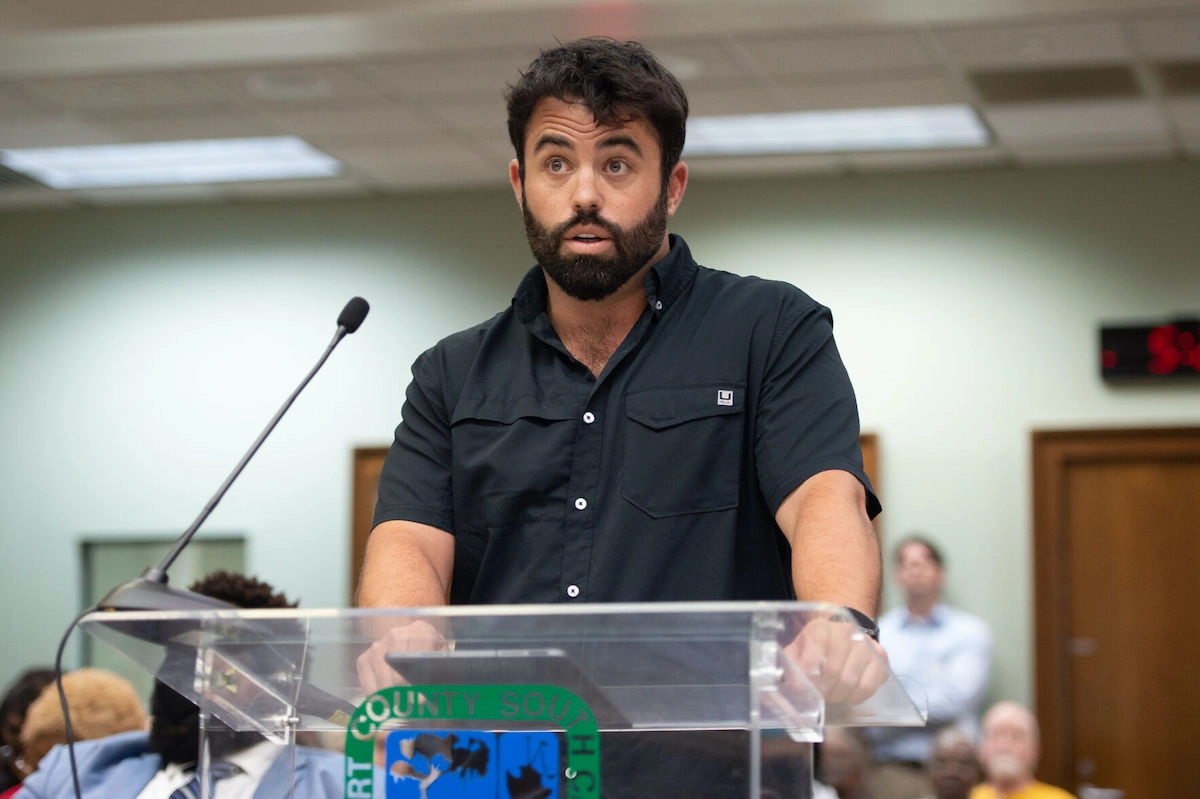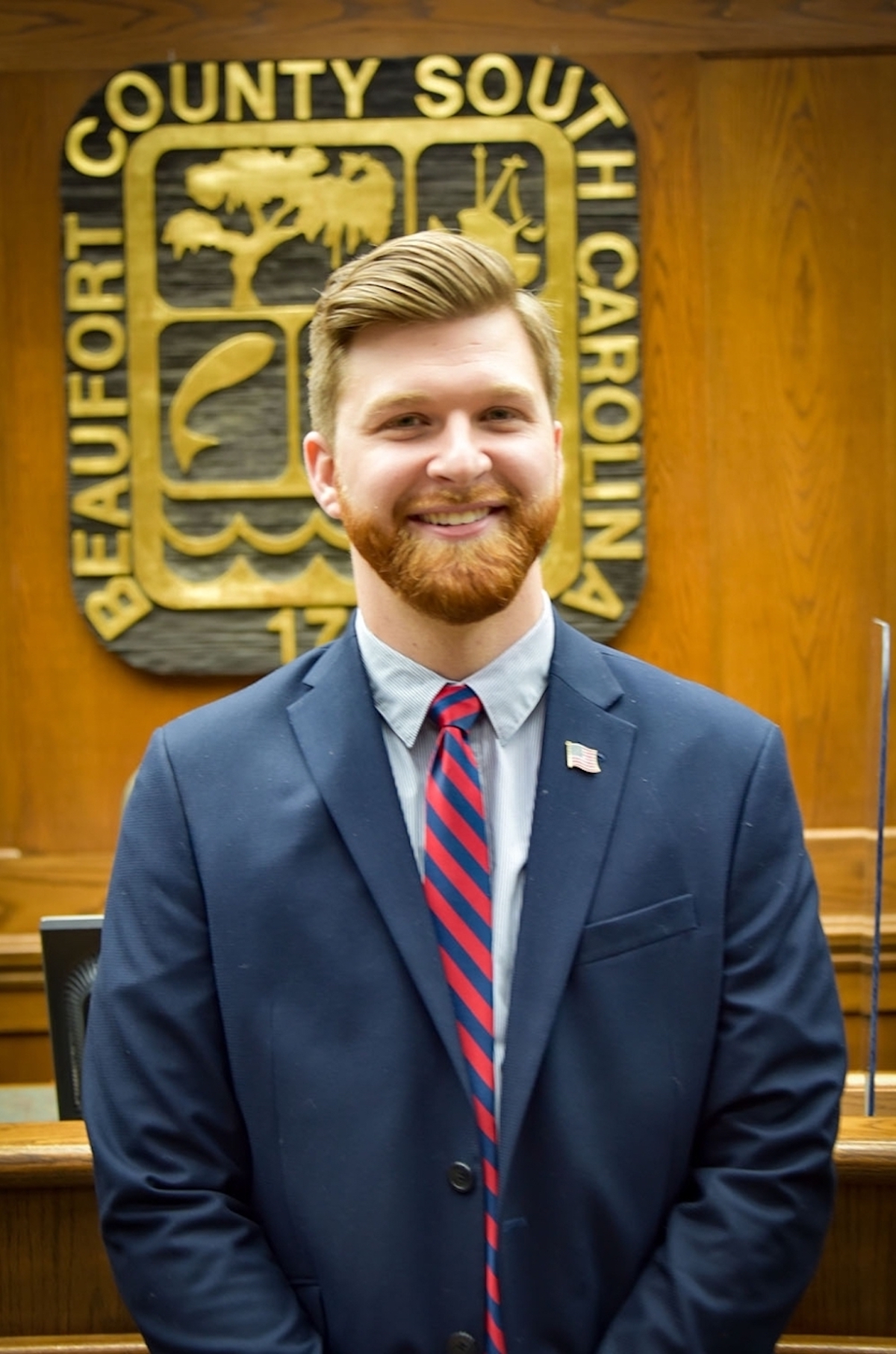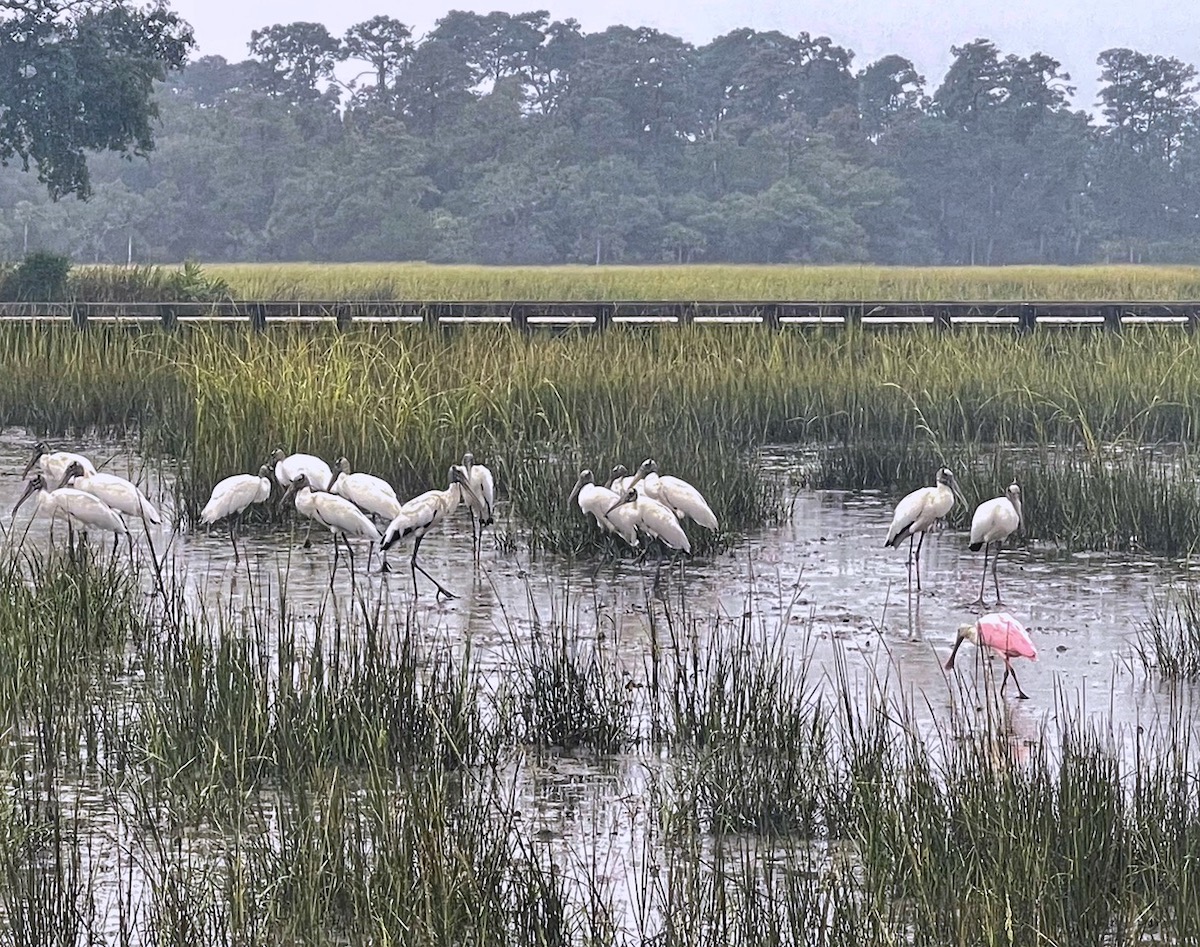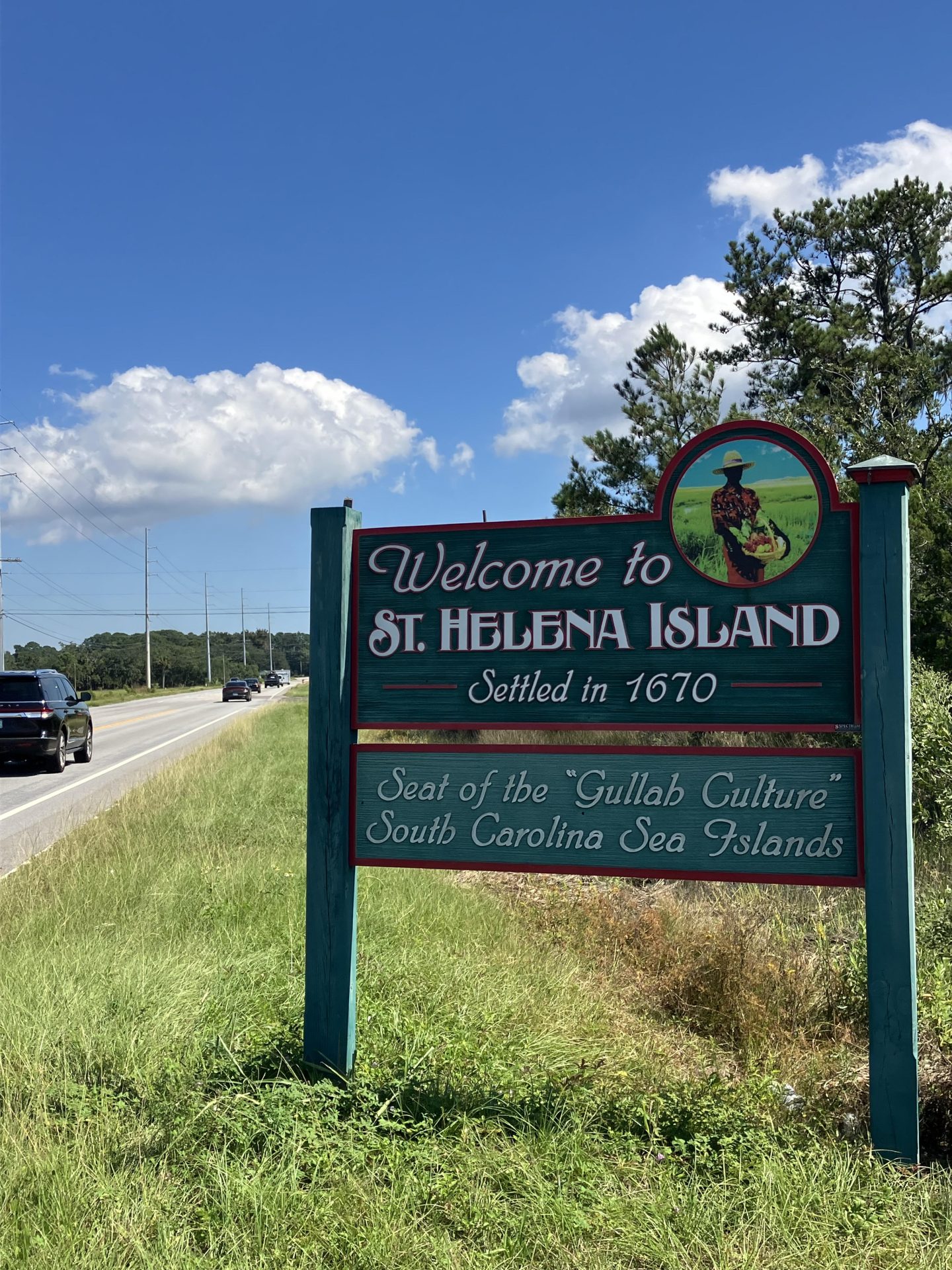By Scott Graber
The Island News
“I’m going nowhere.”
That’s what Pine Island developer Elvio Tropeano said Saturday, Sept. 21, when asked about his future plans for the 500-acre island which has generated much controversy in the past year.
As previously reported last month in The Island News, Beaufort County Council voted 8-3 to uphold its “Cultural Protection Overlay” zoning which currently prevents Tropeano and Pine Island LLC from building a golf course on the undeveloped property.
In a meeting with The Island News over the following weekend, Tropeano reiterated that “My property will be developed with a golf course … or without a golf course and 168 homes.”
He went on to say “My property will be developed with an outcome where everyone wins, or ‘by right’ development requiring no public input at all.”
To emphasize his point, Tropeano produced a loose leaf binder which had 144 DHEC permits for septic tanks and related drain fields.
In the discussion that followed about the history of the Island, Tropeano argued that his development would not hurt farming, fishing or the integrity of the Gullah Geechee people. He also went on to say that the 64-square-mile CPO District would not reduce housing densities or protect the island’s agricultural open spaces.
Some critics have questioned whether his plans for a gated community would limit river access to locals. But Tropeano said he had no knowledge that Pine Island had ever been used for such crabbing and fishing purposes.
“I would be open to a proposal that allowed such activities,” he said.
The Saturday afternoon discussion moved to Black graveyards on St. Helena Island, and the fact that these historic waterside places are often rendered inaccessible by development. There is a history of disputes between the owners of waterfront property and island residents who claim that development encroached into a burial ground.
Tropeano said he was aware of those concerns.
The National Park Service’s 2005 Environmental Impact Study of potential development threats on Gullah Geechee culture was also discussed. That study concluded, “The great transformation, however, began in 1957 when Charles Fraser launched his construction of Sea Pines Plantation on Hilton Head Island. It was not very long before other developers joined in, and resorts sprang up all over the Island. Although only about 20% of the Island was already owned by Gullah Geechee residents, much of the remaining land was owned by absentee landlords who allowed free access to their property. The absentee landlords quickly sold out to developers, between 1950 and 2000 the population of South Carolina Lowcountry counties increased by 151% while the national population as a whole increased by only 86%.”
“Before construction of Sea Pines Planation Gullah/Geechee had been free to hunt and fish all over Hilton Head Island. Suddenly fences and gates blocked much of the land. Residents were cut off from hunting and fishing as well as traditional burial grounds.”
Tropeano responded by saying that these restrictions happened when Beaufort County allowed Planned Unit Developments. Now that they are no longer used as a zoning tool, “the CPO does not and cannot address the allowable density.”
In substance, Tropeano argued “the intent of the CPO cannot be met on such a unique and highly developable piece of property under current zoning.”
This validity of the County’s zoning on Pine Island is now before the South Carolina Court of Appeals which will have the last word on whether Beaufort County has the right to use the Cultural Protection Overlay as a tool to preserve what is left of a disappearing culture.
When asked by this reporter if the County’s decision would make him pack his bags and look elsewhere, Tropeano said “no.”
Scott Graber is a lawyer, novelist, veteran columnist and longtime resident of Port Royal. He can be reached at cscottgraber@gmail.com.











